Electric Violins: Ultimate 2022 Buying Guide
Why should you play electric violin, what do they cost and which one to buy?
In this article you’ll find all the information you need to decide which electric violin is best for the music you want to make. We start with some basics about electric violins and after that comes a buying guide to electric violins in 2022. Also you’ll get to know some famous electric violinists and how they sound.
What is an electric violin?
An electric violin is a violin equipped with an electric output of sound. An electric violin differs from an acoustic violin in the following seven ways.
Body. An acoustic violin is made of a hollow structure that amplifies the vibration of the strings. An electric violin is made of a solid structure that needs to be connected to an amplifier in order to be heard.
Amplification. An acoustic violin does not need any outside equipment to function. The bridge passes the vibrations of the strings into the sound box, creating a full, solid sound, easily heard by audiences. On the other hand, an electric violin transcribes the vibrations of the strings into an electric signal which is then transferred to an amplifier. The sound quality of an electric violin will heavily depend on the type of bridge it has and the quality and number of the sensors. An electric violin cannot clearly be heard by audiences unless it is connected to an amplifier.
Strings. An acoustic violin has four strings: G D A E. An electric violin can have 4, 5, 6, or even 7 strings! Since electric violins are solid, they have an easier time transmitting lower and higher frequencies, thus expanding their range beyond an acoustic. The extra strings are usually a low C for a 5-string electric, a low C and high B for a 6-string, and a low C, high B, and low F for a 7-string.
Design. Acoustic violins always have the same visual appearance. On the other hand, there are no pre-defined rules for the design of electric violins, thus leaving many elements of the design up to the maker. Electric violins must have a fingerboard, strings, a neck, a bridge, etc (otherwise they couldn’t be played!), but beyond these few constraints, electric violin makers are free to do what they see fit.
Weight. Due to their solid bodies and electronics, electric violins are heavier than acoustic violins.
Sound. An electric violin will not sound the same as an acoustic violin (which makes sense because they produce sound in vastly different ways). Think about the difference between an acoustic guitar and an electric guitar. They sound very different, and each sound is ideal for a certain type of music. Acoustic violins are more appropriate for classical music, while electric violins are more suitable for more popular or electronic music.
Maintenance. Acoustic violins require regular check-ups from a luthier. The hollow structure makes it more fragile and more likely to deteriorate over time. By contrast, most of the time, electric violins do not require much, if any, maintenance. Electric violins are not coated with any type of polish; instead, they’re coated with a very hard and resistant varnish, meant to extend their service life. Of course, it is always important to take care of your violin by washing your hands before use, wiping the rosin dust off, and keeping it in a cool, dry place.
Additionally, electric violins come in a few variations, such as electro-acoustic violins and silent violins. Electro-acoustic violins have a hollow body like a traditional acoustic violin, but also have built-in electronics for amplification. Silent violins have all of the same features and capabilities as electric violins, but with the additional capability of being plugged into headphones, so that only the player can hear its output.
How does an electric violin work?
The bow vibrates the strings. That vibration is then transferred to the wood and a microphone pickup that transforms the vibration into an electric signal. This signal is then output through an amplifier or mixing console, creating the sound the listener hears. Silent violins have the capability for headphones to be plugged into them as another way of sound output. It is important to note that silent violins are never truly silent, so if you’re looking for a way to not disturb your neighbors while practicing, a practice mute might be a better option.
Do you need an amp to play an electric violin?
It depends. If you want your sound to be heard loud and clear, then yes you will need an amplifier. However, if you’re looking to purchase an electric violin for the purpose of late-night practice (and therefore want the sound to be minimal), then an amp isn’t necessary. Without an amp, an electric violin will still sound, but it will be nothing compared to its full capabilities when using an amp. However, an electro-acoustic violin will produce a healthy sound regardless if it is plugged into an amplifier or not.
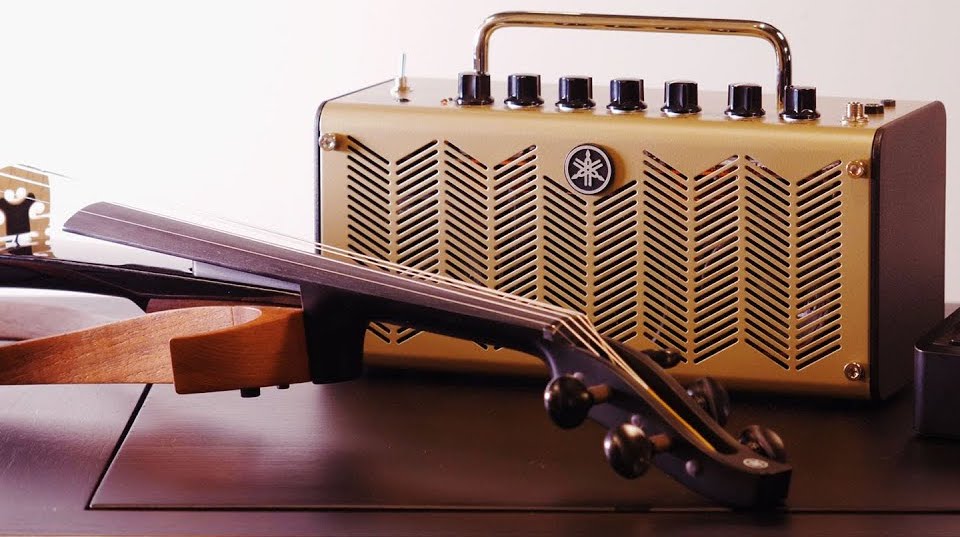
Are electric violin strings different?
Any strings that work on an acoustic violin work on an electric violin also (for example for guitars this is not always the case). As the sound is produced by electronics, strings make less of a difference for electric violins than for acoustic violins. Often steel strings are chosen for electric violins, because the tuning stability is great, they are very durable for intense playing and they are relatively cheap.
For electric violins that have more than four strings, you’ll need to pick special lower strings that are suitable for the vibrating string length of a violin. You can’t just put cello strings on it ;). Due to the shorter vibrating string, the tension of cello strings will be too low to play. A viola C string will only work as a fifth electric violin string if it’s for a 14 inch viola.
Do electric violins need rosin?
Yes! Electric violins are played in the same way as acoustic violins are, and therefore need rosin to help the bow hair stick to the string and produce the best sound.
Why should you play an electric violin?
There are several reasons why you could choose to play an electric violin over an acoustic.
Playing in a band. When playing in a band, the violin needs to be amplified in order to be heard. An acoustic violin’s sound is nothing compared to an electric guitar! Additionally, bands generally play in large spaces that require a bit of “help” (amplification) of the sound in order for the attendees in the very last row to hear the music as clearly as those in the first.
More strings. As mentioned previously, electric violins can have up to 7 strings! This allows the player to play more notes, create a wider variety of sounds, and play a wider range of music.
Effects and distortions. Electric violins can be used with effect pedals that can add a variety of effects and distortions to the sound.
Minimal sound. Some players may choose to practice with an electric or silent violin to minimize their disturbance while practicing. This may be ideal for late-night practicers or those with finicky neighbors!
Preference. You can play an electric violin simply because you enjoy it more than an acoustic.
Are electric violins the same as acoustic or classical violins?
Yes and no. Electric and acoustic violins are essentially the same instrument (ie they are both violins). The main difference is how they produce sound. Since electric violins are amplified instruments, you are not limited to the soundbox to create sound, therefore it can get better sound in the extreme registers (very low and very high). Although modern acoustic violins have four strings now, in the Baroque period it was not uncommon for them to have six or seven. However, as concert halls became larger, the instruments needed to become louder in order to fill them, and due to the restrictive capabilities of the sound box, they had to split the instrument into two: the modern-day violin and viola. With the invention of electricity, we can go back to these old ideas and get power out of the bottom register and clarity out of the top, all in one instrument, an electric violin.
Are electric violins good for beginners?
It depends on your reasoning for wanting to play an electric violin. If you want a violin that has a wide range of capabilities (such as effects and distortion), can be almost inaudible for practice purposes, and could possibly be cheaper, then it makes sense to go with an electric violin. However, if you’re thinking about getting an electric violin because you think it will be easier to learn, you will most definitely be disappointed!
Are electric violins easier to play?
In my experience, the only thing that differs between electric and acoustic violins is tone quality. It is slightly easier to get a good sound out of an electric violin. Players have a harder time switching from electric to acoustic than the other way around. I always recommend starting out on an acoustic violin unless you’re sure you exclusively want to play electric.
There are also electric violins that come with frets (like Wood violins), which can be easier for beginners (although putting tapes on an acoustic violin has the same effect).
How do you play an electric violin?
In exactly the same way you play an acoustic. There is nothing different about the technique. Intonation, shifting, vibrato, etc, are all the same!
However, if you choose for an electric violin that has more than four strings, you have more lower notes and you need to get used to the instrument in terms of string crossings.
Electric violins vs. Carbon Fiber violins
Carbon fiber violins are not the same as electric violins. In fact, carbon fiber violins share more in common with acoustics than electrics! Carbon fiber instruments are made out of a mix of carbon fiber and resin. Layers of carbon fiber are placed into a mold and then coated with resin, sealed in a vacuum clamp, and hardened into shape. They look very similar to acoustics (differing only in color), and are played in the same way (ie the strings vibrate the bridge which transmits the vibrations into the hollow body). Carbon fiber violins do not sound the same as acoustics; they resonate differently and generally sound louder and deeper. I cannot say which sounds “better”- that is for you to decide! Carbon fiber violins are most often cheaper and can withstand greater extremes in climate.
Carbon fiber violins can be electric, meaning they have a pick up element. Most carbon fiber violin brands sell their instruments in two variations: the normal ‘acoustic’ one and the electric violin. If you choose the electric option, you essentially have a hybrid instrument that you can use as an acoustic carbon fiber violin without electronics or plug it in and use it as an electric violin.
Electric Violins vs Silent Violins
If you’re worried about bothering family members or neighbors while practicing violin, you might have thought about buying an electric violin for that reason. When looking to buy an electric violin you might have come across silent violins. Is there any difference?
Some electric violins have a hollow body. This can be just for the looks or it can have an acoustic function. This hollow body will produce sound even if you’re not plugged in.
A lot of electric violins have a solid body. This means that there’s not any type of soundbox. When you play this violin, it won’t be silence, but you just hear the sound of the strings themselves.
Yamaha produces ‘silent violins’, the SV series, which is made for the purpose. This is the silent violin I recommend as you can plug in headphones directly into the instrument and the sound quality on headphones is great. Buy yours right here.
A cheaper solution is a violin practice mute. This makes your acoustic (classical) violin almost as silent as a silent electric violin and costs a few dollars.
PS: You have the right to practice violin in your home. Sure, don’t do it at 2 am or 40 hours a day. Don’t be ashamed that you want to practice violin daily. You hear sounds from your neighbors too.
Electric Violins vs Electro-Acoustic Violins
Just as that there are carbon fiber violins with a pick up element, there are also wood acoustic violins that have an integrated pick up.
Electro-Acoustic violins can be used unplugged and then function in the same way as a normal acoustic violin. With the integrated pick up element you can plug it in and use it as an electric violin.
Advantage of this is that you can do both with one instrument, which means you just need to buy one instrument and just need to get used to one instrument. However, a lot of violinists like to have two dedicated instruments: one fully aimed to play electric and one acoustic.
Electro-Acoustic violins can have a carbon fiber soundbox or a traditional wooden soundbox. Sometimes they have a wooden soundbox, but this wood is varnished in a cool color.
If you’re looking for a violin that can do both, there are more options for ‘just’ wood violin than for electro-acoustic violins.
It’s possible to make your acoustic violin electric. It’s hard enough already to find a great instruments that is a good fit for you. Once you have your precious violin and you want to play amplified, a microphone or a pick up can be a great option. Most are designed in such a way that you don’t have to make permanent adjustments to your instrument. For example when using a microphone with a violin mount, you can easily place and remove it.
Why not use a pick up element instead of buying an electric violin?
Great low budget solution for amplified violin playing!
If you need to play amplified, it’s also an option to place a microphone or pick up element on your violin. In that way you don’t need to buy a whole new instrument.
In case your budget for an electric violin is under $ 500, you might prefer to invest in a high quality microphone or violin pickup instead of a cheap or mediocre electric violin. The overall result might be better.
There are pickups and microphones for violin within all budgets. Also they come in very different shapes and forms: rubber band around your violin, clip on microphone, pickup integrated in the bridge and more.
Electric Viola (no joke)
The four string electric violins are tuned just like an acoustic violin: GDAE. The five string electric violins have an extra lower C string, that corresponds to the tuning of viola. With a five string violin you have the range of a violin and viola in one instrument: CGDAE.
If you’re a violist looking for an electric instrument however, I would recommend getting a dedicated electric viola. An electric viola has the same size as an acoustic viola (search for the size that matches your viola). Getting a five string electric violin is a great hybrid solution, but if you want to switch easily back and forth your acoustic viola and your electric instrument get one with the same size and tuning.
What’s the best electric violin to buy?
The best electric violin to buy is the one that will fit your needs. Here are a few things to consider before buying an electric violin.
Consider how and where you want to use it. Are you looking for a silent violin for late-night practice? Are you considering joining a band where you’ll need amplification? What kind of music will you be playing and in what setting? Also, consider if this will be your primary instrument or an addition to your acoustic. If it will be your primary instrument, perhaps going with an electro-acoustic instrument will be best, since it will give you a wider range of possibilities. However, if this is just an addition to your acoustic, you can get more specific with its capabilities.
How much is an electric violin?
Electric violins can range anywhere from $100 to a few thousand. However, just like with anything else, you get what you pay for. Instruments under $500 were most likely made in a factory and come with low-quality equipment. However, if you can go up to $600 or so, your options (and their quality) dramatically increase.
Don’t forget to leave space in your budget for a good quality amplifier and maybe even a multi-effects processor!
Ideal tone quality. Some electric violins are made to sound more electric, and some are made to sound closer to acoustic. Generally, as you go up in price, the violin becomes more complex and natural-sounding due to more advanced pickup technology. Electric violin tone can easily be altered through equalization and effects, but it’s important to have a base tone that you enjoy.
Brands with rich, warm tones: Bridge Violins, Aurora
Brands that are more acoustic sounding: Yamaha, Fourness, MSI, NS Design
Ideal look and feel. Electric violins come in a wide variety of designs. Do you want one that stands out or one that is closer to a traditional violin shape? What color would you prefer? Are you okay with a heavier model, or do you prefer something lighter? What shoulder rest setup do you prefer?
Don’t forget about the bow! While you can play your electric violin with a regular acoustic violin bow, it could be worth looking into other options. If you’re going to be playing in a crowded space, consider looking into a different bow that you wouldn’t be heartbroken over losing or breaking. Many players prefer to use a carbon fiber bow with electric violins, as they can withstand more force and different environments.
Most importantly: If at all possible, try a lot of different violins out before making a purchase.
Why are electric violins cheaper than acoustic violins?
Generally, electric violins are cheaper than acoustic violins because the cost of production is significantly lower. Top-of-the-line electric violins go for around 2.5k while top-of-the-line acoustics can cost millions.
Electric Violin Buying Guide
Below, you’ll find different price ranges for electric violins along with suggestions for brands and specific models in each.
Electric Violins Under $500
- Fiddlerman Tower Strings Electric Violin Outfit < $ 300
- Fiddlerman Tower Strings Electric Pro Violin Outfit < $ 300
A cheap solution to play the violin amplified, can also be a violin pickup or microphone.
Electric Violins $600 – $1000
- Glasser AEX and AE (carbon fiber and acoustic-electric)
- NS Design WAV
- Wood Violins Stingray SVX
- Yamaha YEV
- Auro
The Wood, NS Design WAV And Yamaha are all available in four strings (normal violin tuning GDAE) and five strings (with an added lower C string, so CGDAE).
Electric Violins $1000 – $1750
- Aurora “Classic” and “Silhouette” acrylic violins with LEDs
- Bridge Violins “Aquila” four-string and “Lyra” five-string
- NS Design NXTa
- 3Dvarius
- Yamaha SV-200
Electric Violins $1750+
- Bridge “Dragon” and “Tasman” (electro-acoustic)
- Wood Violins Viper Classic
- Yamaha SV-250 (4 string) and SV-255 (5 string)
- Fourness Fuse
- NS Design CR
Famous electric violinists and violin solos
Ever wonder what an epic electric violin solo sounded like? Look no further. Here are a few of the most well-known electric violinists of all time.
Vanessa Mae: Storm
Vanessa Mae is arguably one of the most well-known electric violinists of all time- but did you know she was classically trained? At age thirteen, she became the youngest soloist to record both the Tchaikovsky and Beethoven violin concertos.
Lindsey Stirling: Crystallize
Lindsey Stirling revolutionized the world of electric violin playing with her innovative compositions (such as the one seen above) and her unique talent for dancing while playing. She has performed all over the world and received a number of awards for her violin playing.
David Garrett: Winter
Another classically trained violinist, David Garrett mostly plays covers of popular songs and classical music with an electric violin set up.
Taylor Davis: He’s a Pirate
Taylor Davis is best known for her original covers of video game music and corresponding music videos.
FREE Violin Scale Book
Sensational Scales is a 85 page violin scale book that goes from simple beginner scales with finger charts all the way to all three octave scales and arpeggios

Hi! I'm Zlata
Classical violinist helping you overcome technical struggles and play with feeling by improving your bow technique.
Ariella Zeitlin – Beggin Maneskin
This violinists writes and produces her own music and rocks her Wood Viper electric violin.
Do you consider buying an electric violin?
Let me know your favorite in the comments!



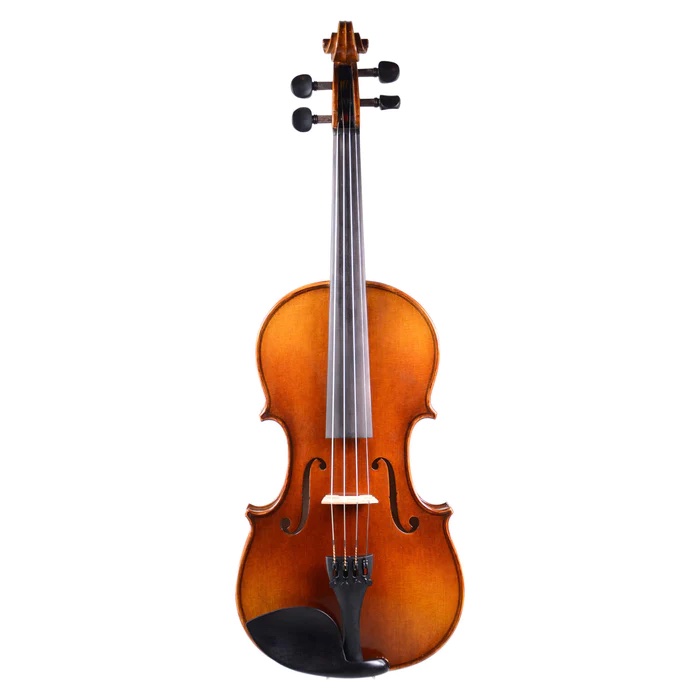
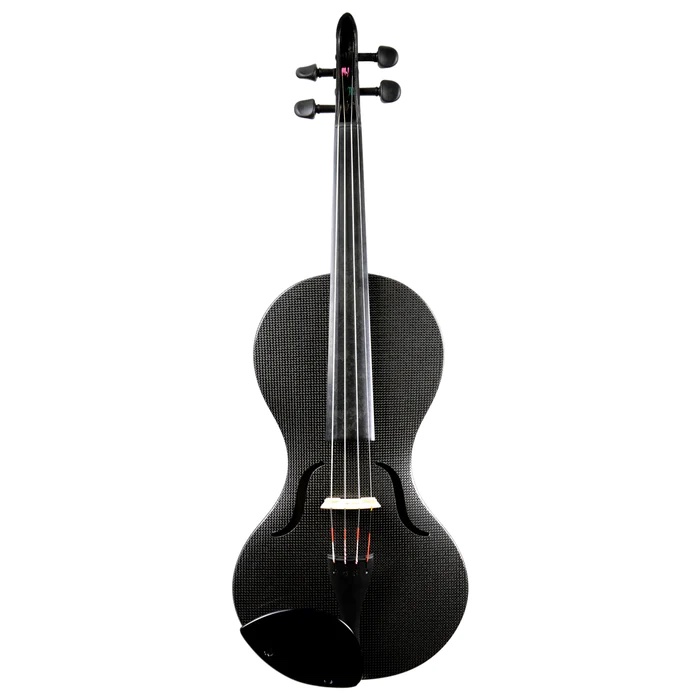
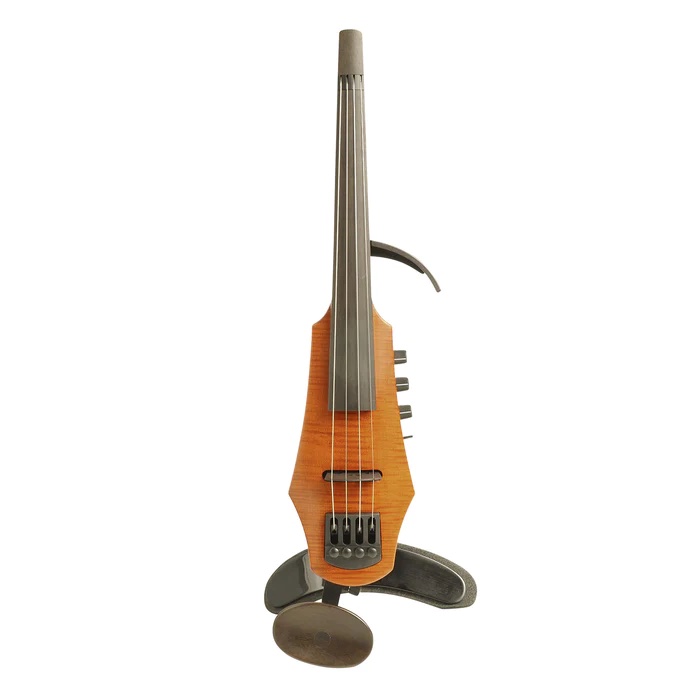
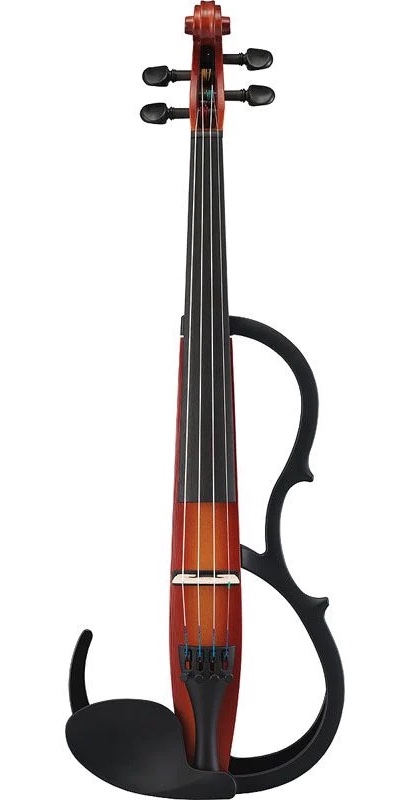
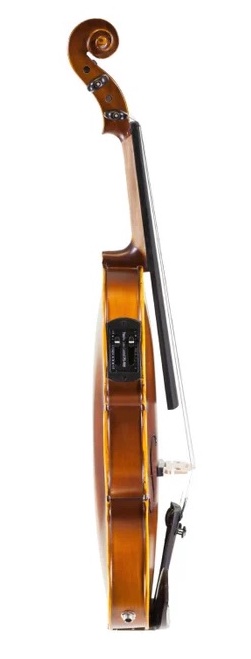
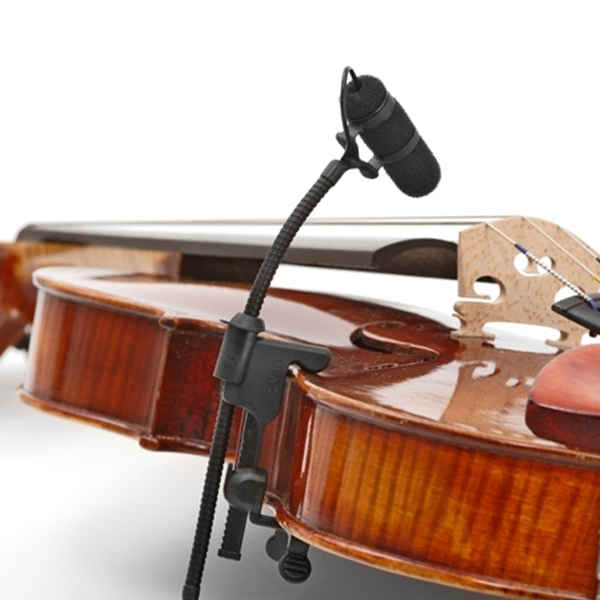
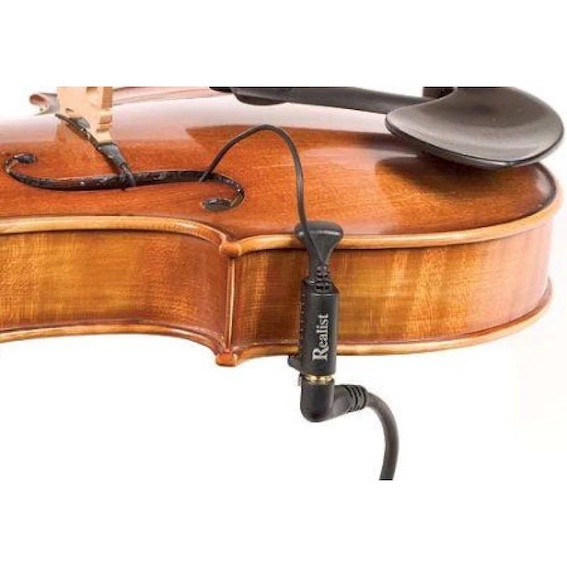
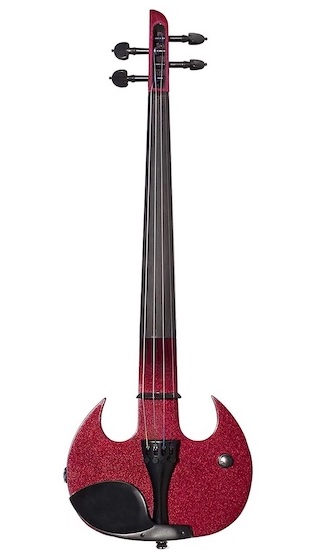

Thank you – I am looking to relearn the violin after fifty years. Am wondering whether to spare the neighbours with an electric / silent violin – or just go for it with an acoustic and wait for them to get me a studio of my own
Go for a practice mute! Much cheaper and the sound will be just as soft as electric.
Viper violins are poorly made, an the company service stops when you have handed over your hard earned money. If you think I’m lying, I can say from personal experience that wood violins ripped me off $3800 with a seven string and refused refund after it was found full of defects such as frets not leveled. Buzz city. And crappy thin veneer (not maple cap as advertised) poor workmanship (shocking fret job, and nut cut incorrectly/offset), average paint cheap looking Sunburst, honestly more like a cheap Chinese knockoff with. A Barbera transducer pickup ..so do not ever consider purchasing a seven, six, or even 5 string and forget doing business with this company. I purchased directly from their website and when I raised these issues, they berated me and they didn’t want to know. They sent a spare nut but it wasn’t even cut. They would take a return, but with a very large restocking fee. Complete rip off. Cannot trust Mark Wood Violin co. I’d choose Yamaha; at least they stand behind their products which are superior in every way.
Sorry you had this experience. Thanks for sharing!